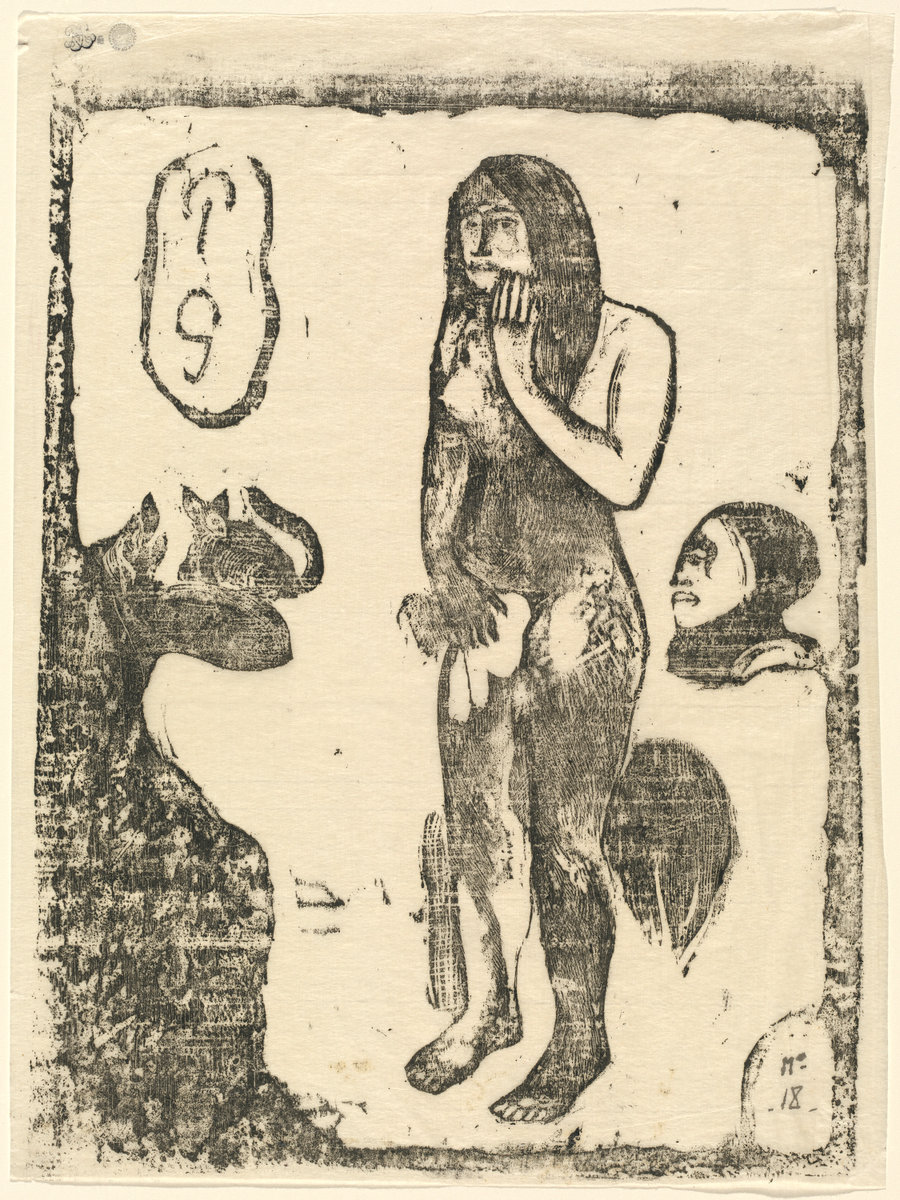< Back |
Mary, Eve, and Gauguin’s Tahitian Tensions
Artist: Gauguin, Paul (French, 1848 – 1903)
Title: Eve
In or after 1895
woodcut on japan paper
1948.11.117
National Gallery of Art, Washington, DC
Student Curator Comments:
Eve stands nude against a blank background. She appears beset with anxiety while a plant-like shape extends towards her menacingly and a floating bust with a hooded, mask-like face stares at her from the right. The strange gaze of the floating head emphasizes her nudity, which she attempts to hide with a large leaf that she holds against her body with her right hand. Yet Eve does not use her left hand to cover her exposed breasts; instead she places it on her cheek in an expression of worry. Contrary to the Biblical account in Genesis, this Eve is not a figure of shame but rather one of fear.
Similar figures with this sense of fear can be found in earlier works by Gauguin, most notably The Nightmare from 1892. These images of anxiety may reflect the artist’s concern with taking Tahitian imagery and combining it with Christian symbolism to explore ways of depicting an Eden that he was unable to find in his own life. While Gauguin outwardly painted scenes of women in paradise, his work also reflects his preoccupation with the Tahitian “tradition [of] a great fear of the spirit of the dead,” as well as his enduring interest in the fall of man and the duality of good and evil.1 Paul Gauguin, Letters to His Wife and Friends, ed. Maurice Malingue (Boston: MFA Publications), 177.
References
| 1. | ⇧ | Paul Gauguin, Letters to His Wife and Friends, ed. Maurice Malingue (Boston: MFA Publications), 177. |





